Bengal alpona, "Poush Sankranti in the villages"— part 5
Alpona adorn the courtyards of houses. A closer look reveals houses, stables or kitchens. Sometimes with pictograms of humans or animals inside, and offerings of chillies, onions, pea pods, different types of seeds meant for the kitchen, and grass.
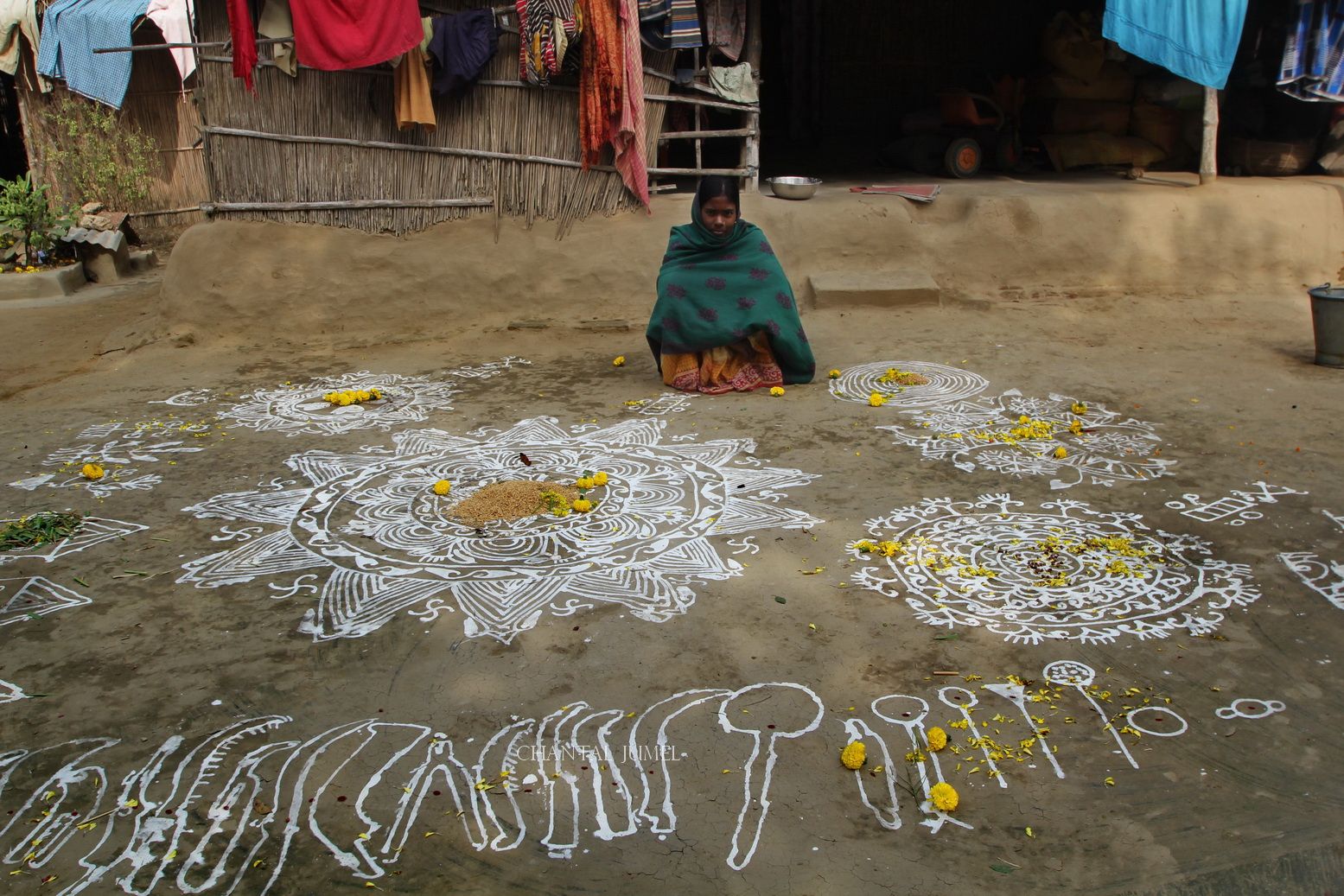
The morning continues with Rabi, who plans to explore some of the nearby villages in search of unusual alpona. Along the way, the road offers many opportunities to marvel at Indian creativity applied to various areas of everyday life. What a fascinating sight it is to observe tree trunks covered with cow dung cakes reproducing the imprint of a hand or sticks also coated with the precious dung, arranged vertically along the fences. Fingers have moulded the cow dung around the stakes and the marks come in many variations. Further along the road, against the backdrop of clattering weaving machines, rounded wooden rolls like multicoloured candy canes display saris waiting to be folded in a pre-determined pattern.
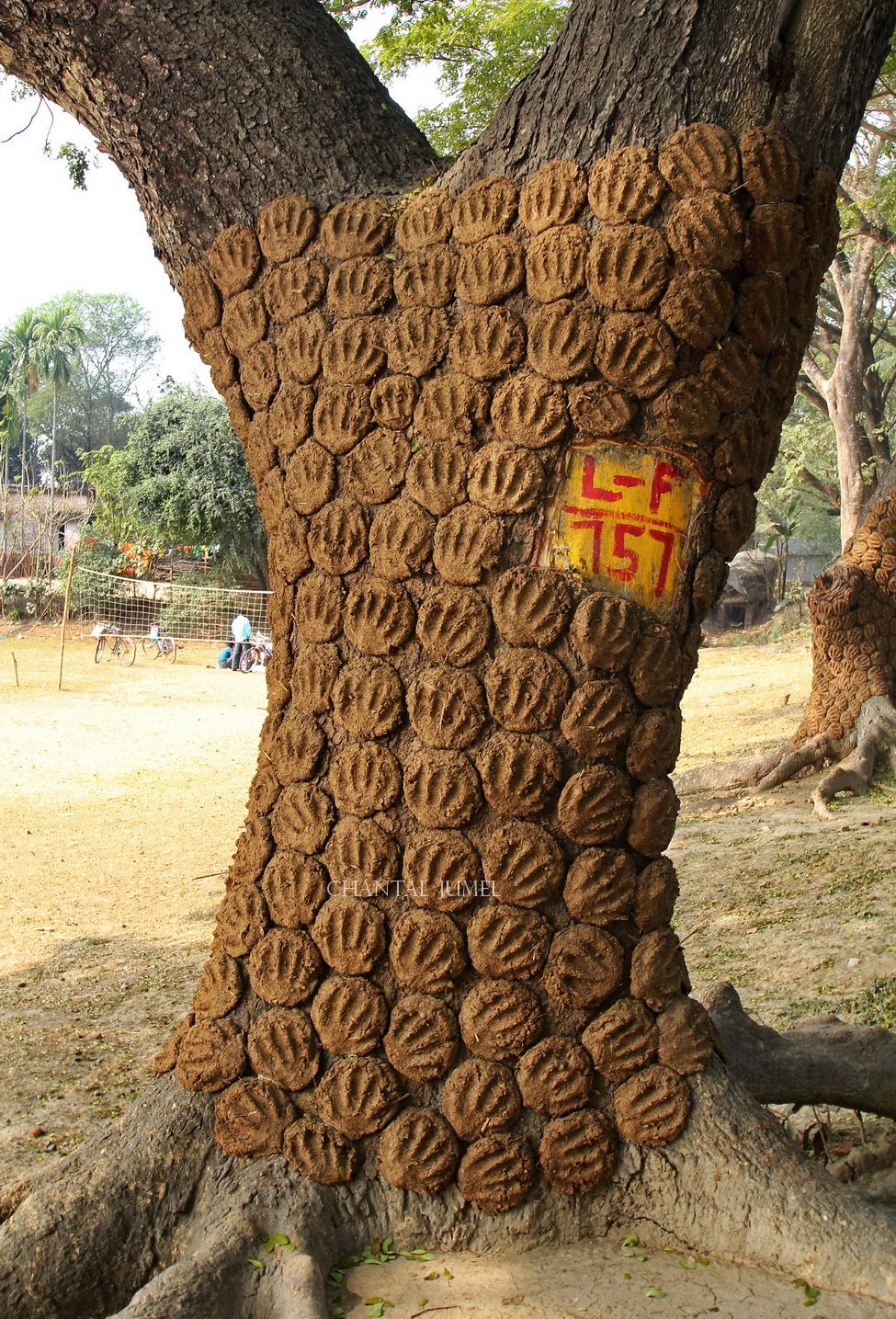
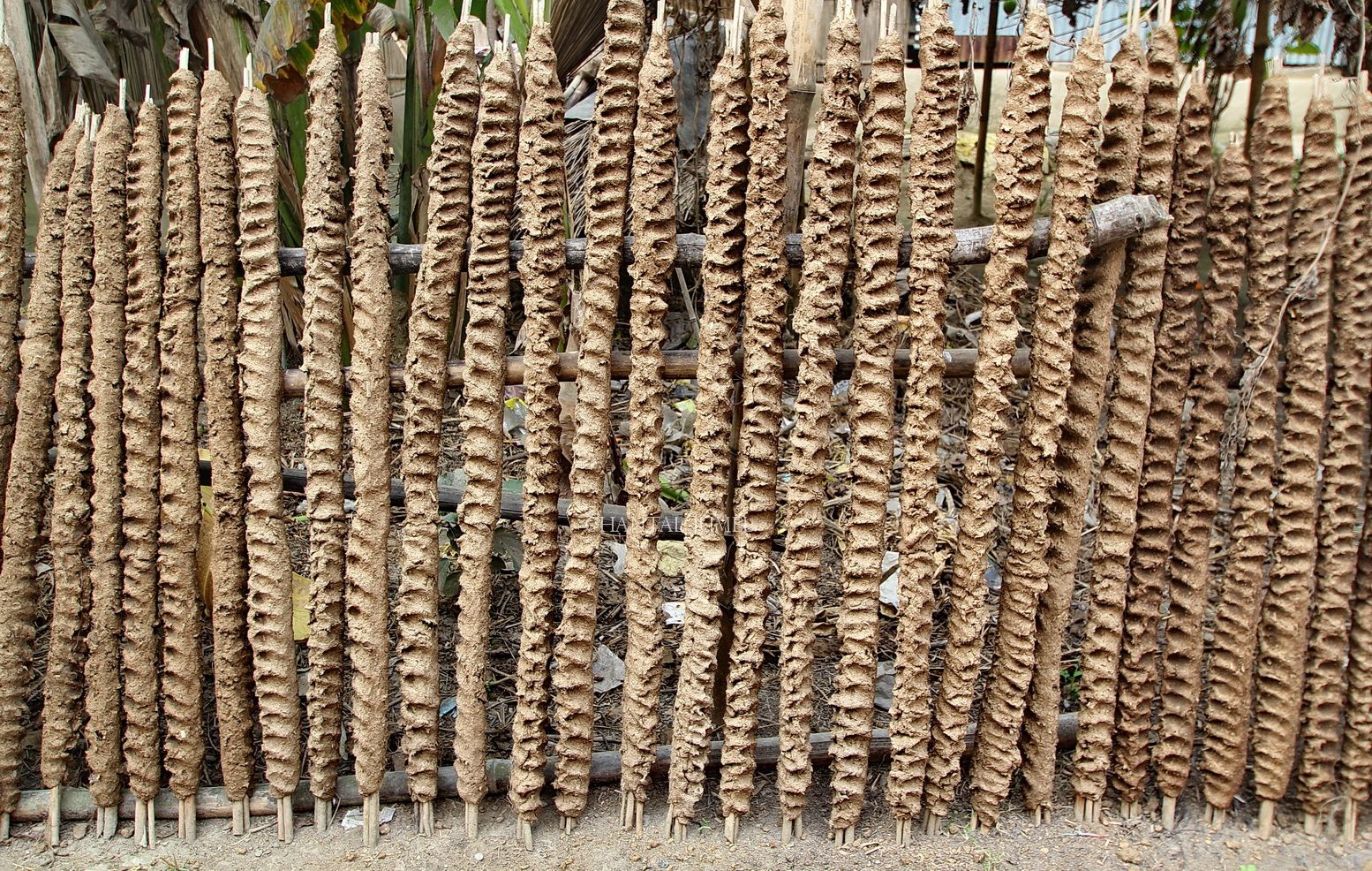
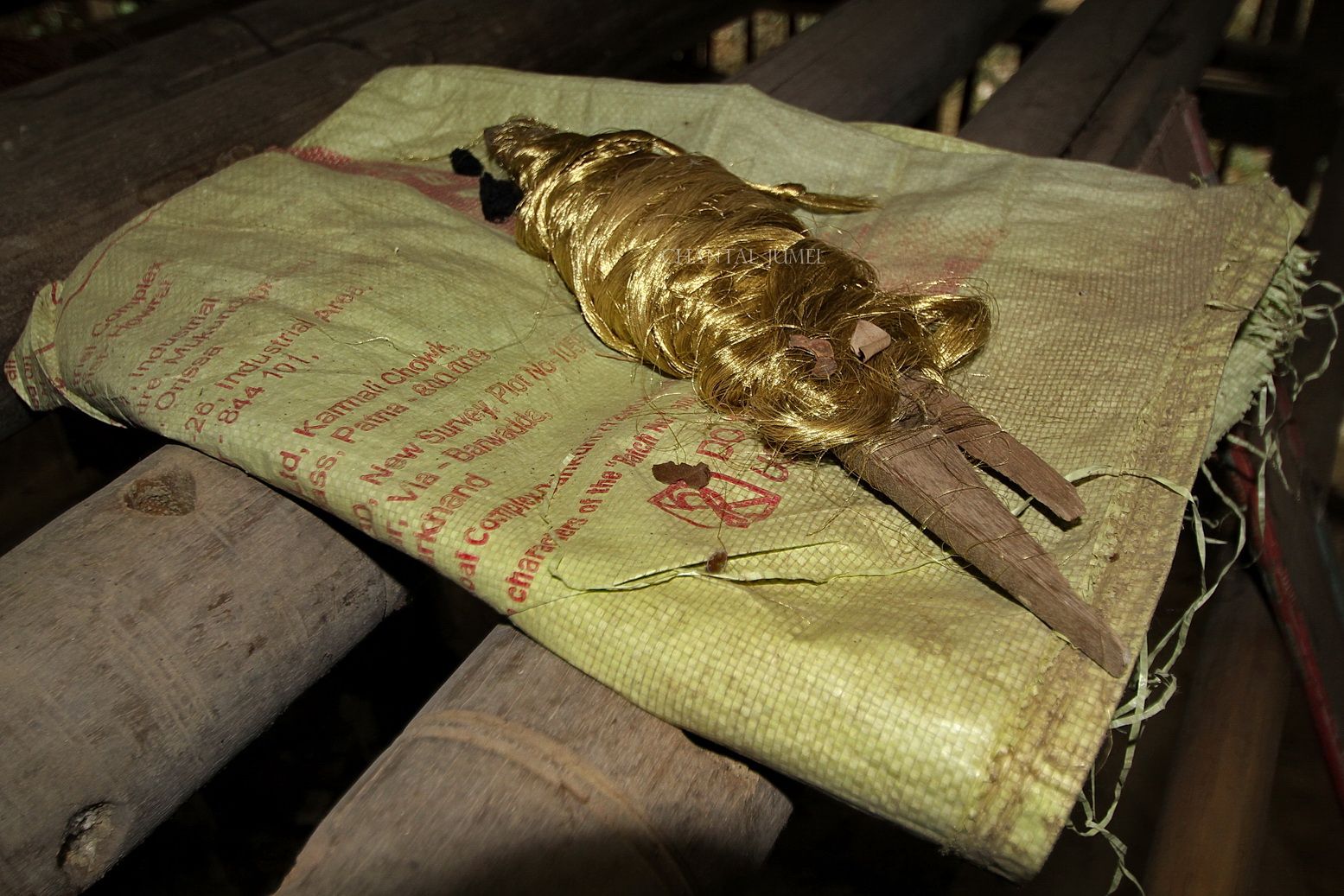
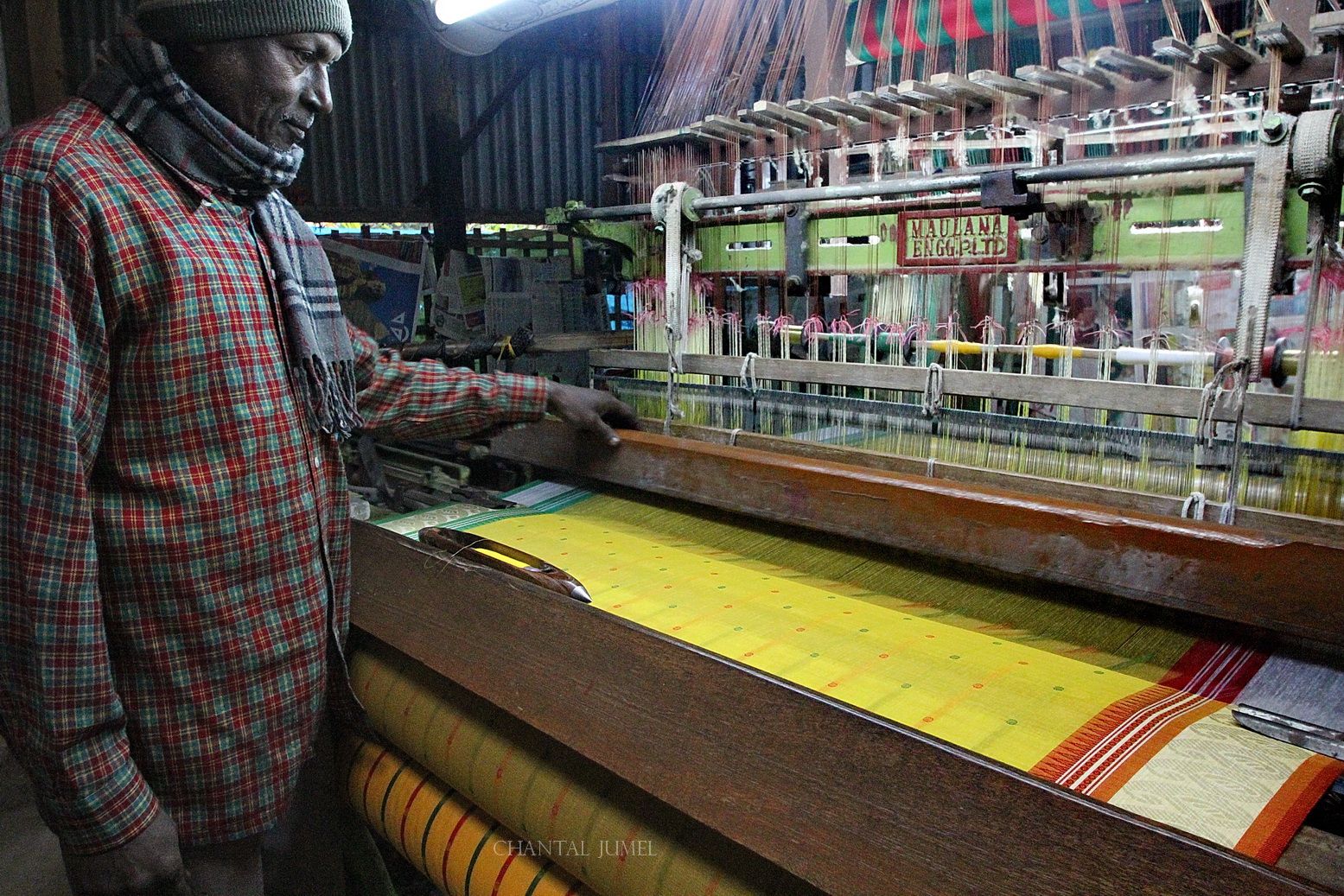
Drawing a miniature world
We stop in a first village where the presence of alpona enlivens the courtyards of all houses and farms. Apart from the circular representations, simple squares or squares topped by a triangle arouse my curiosity. On closer inspection, I realise that they represent a house, a stable or a kitchen. Sometimes all three coexist with pictograms of humans or animals inside. The offerings are chillies, onions, pea pods and various seeds for the kitchen and a handful of grass for the stable.
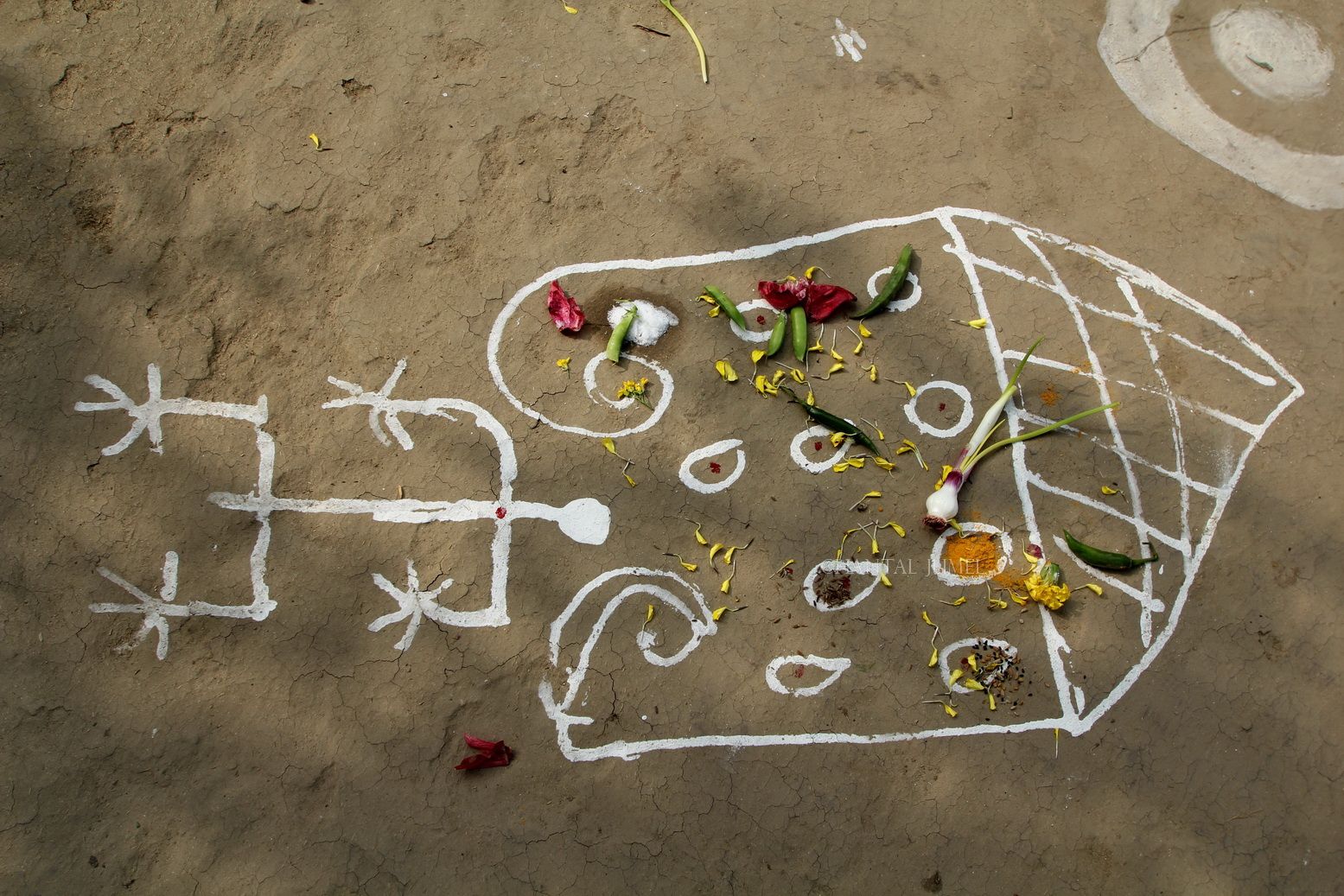
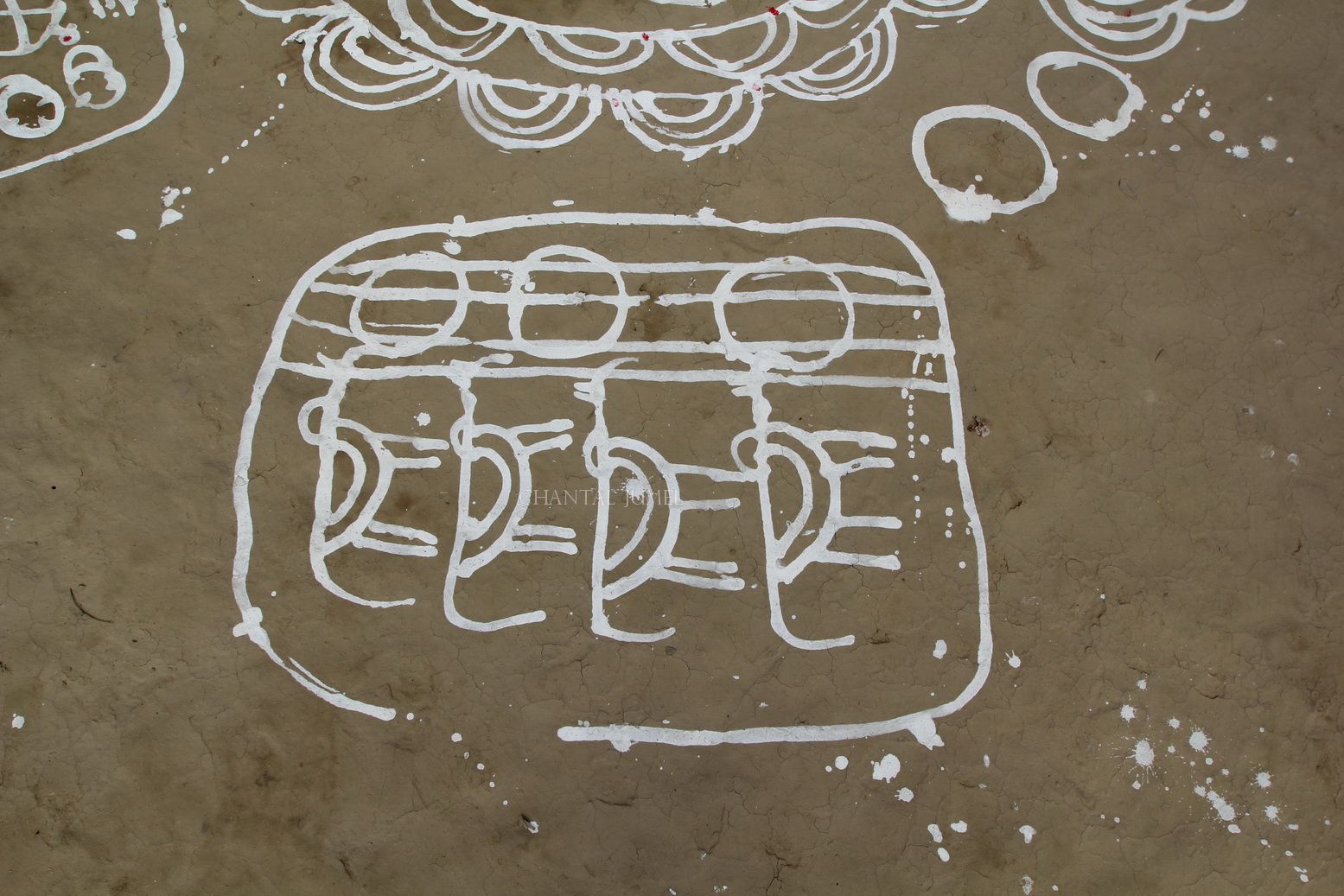
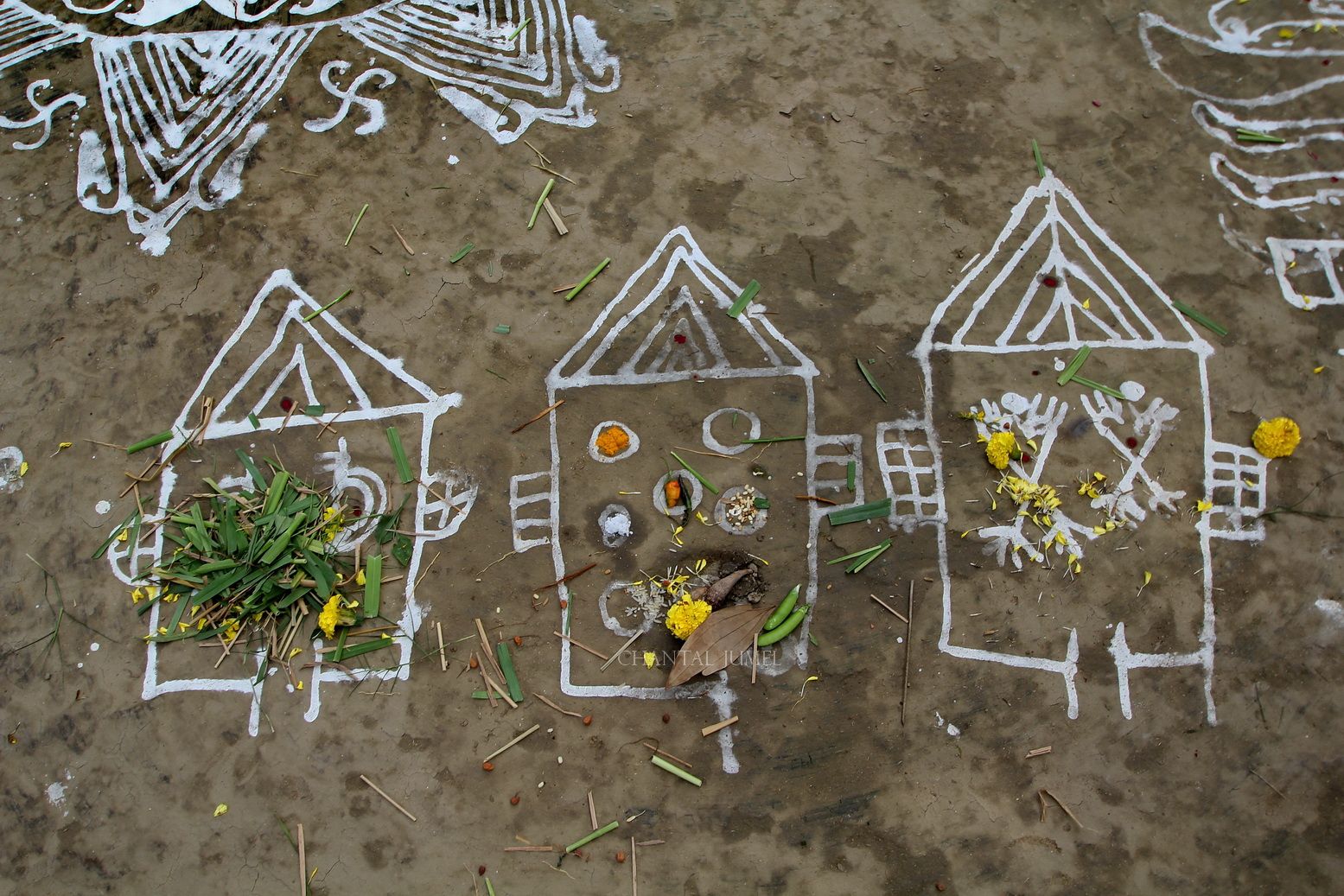
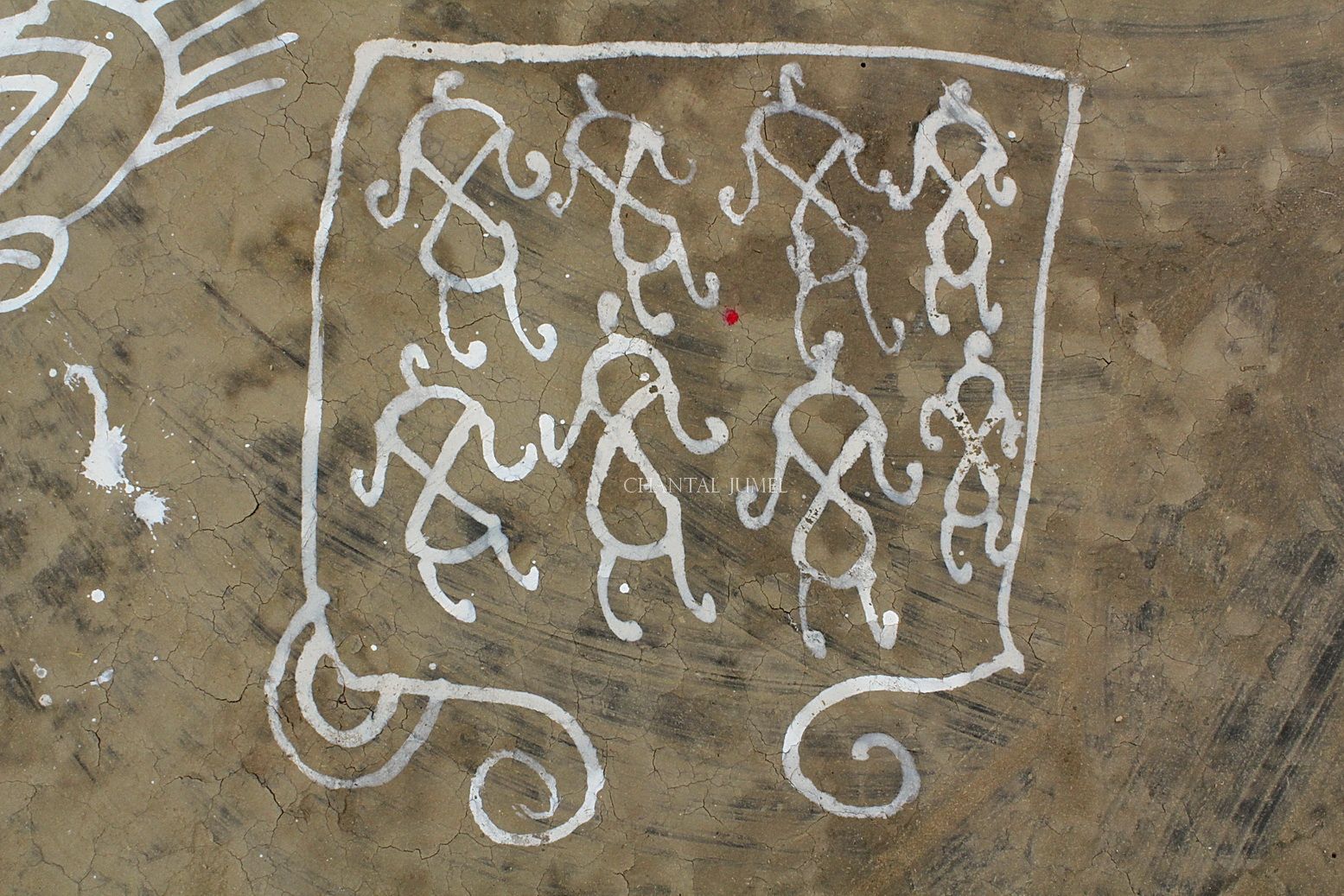
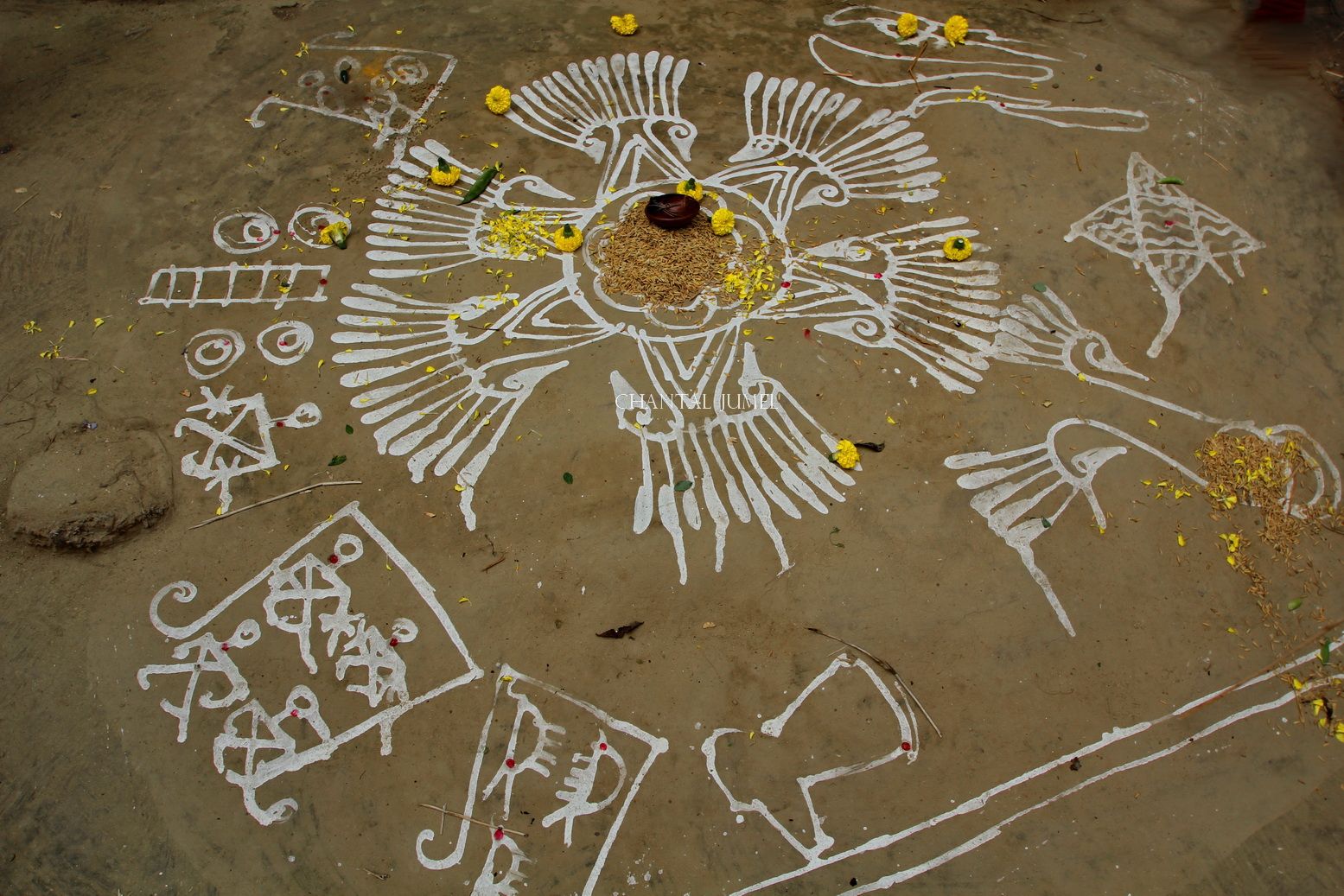
Drawing objects of a farmer's life
There are drawings of ladders leaning against concentric circles - an allusion to granaries or gola, baskets with handles for picking flowers, a cart that becomes real when a peasant carrying wood appears on the road. Then, there are curiosities, such as a dish of young shoots to signify renewal and abundance, flower pots, and a pair of scissors in front of the tailor's house, because during Makara Sankranti, the craftsmen also pay homage to their tools.
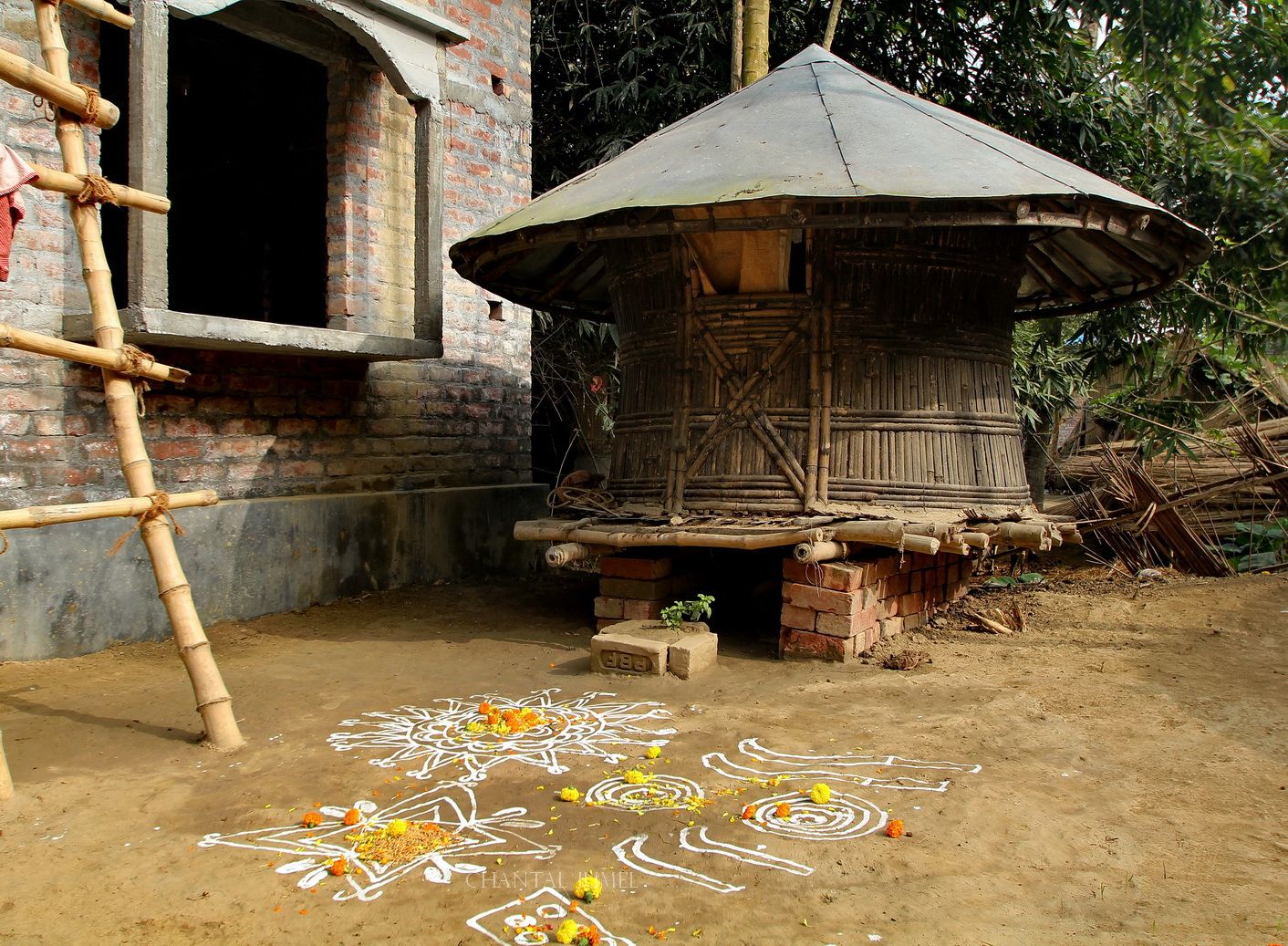
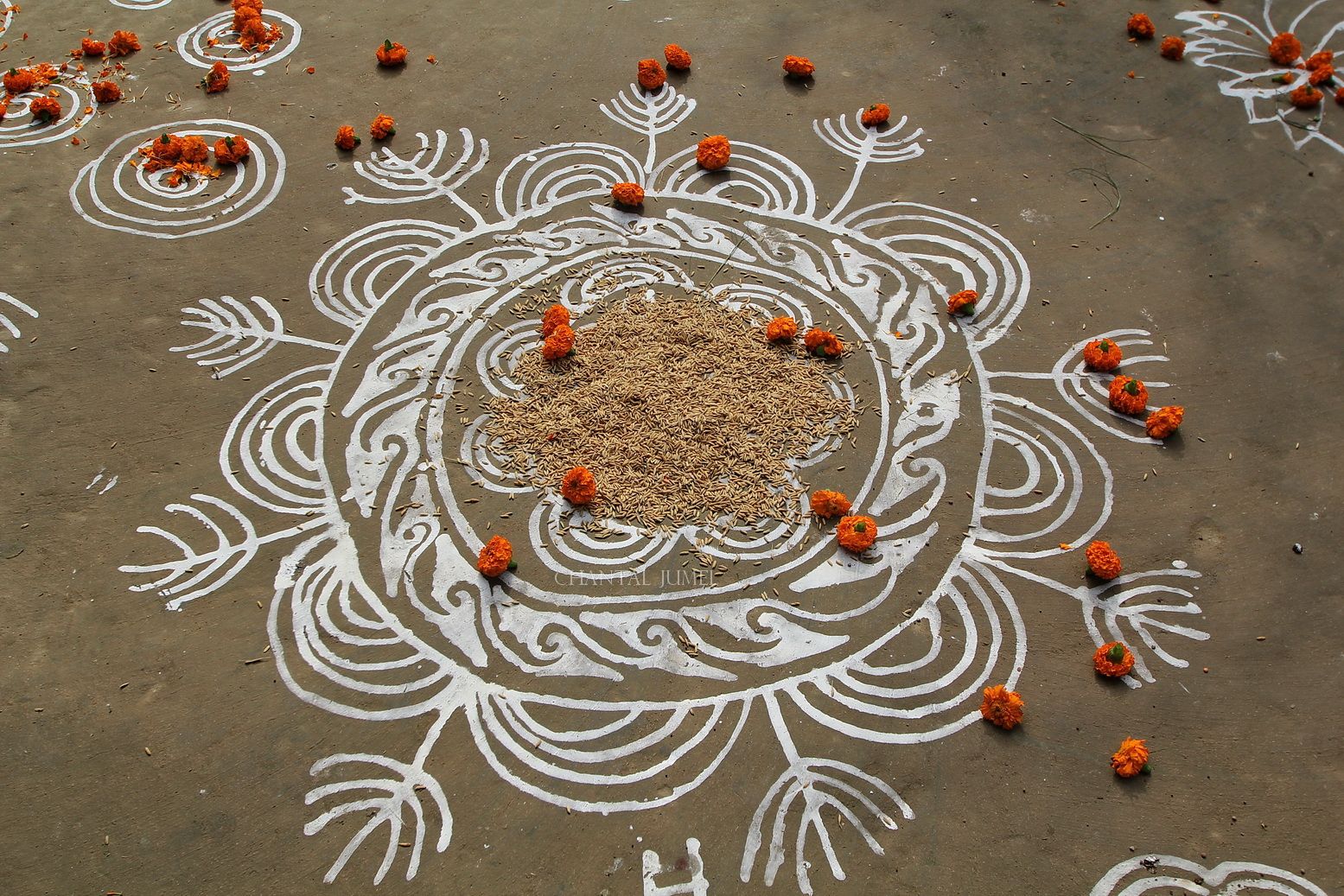
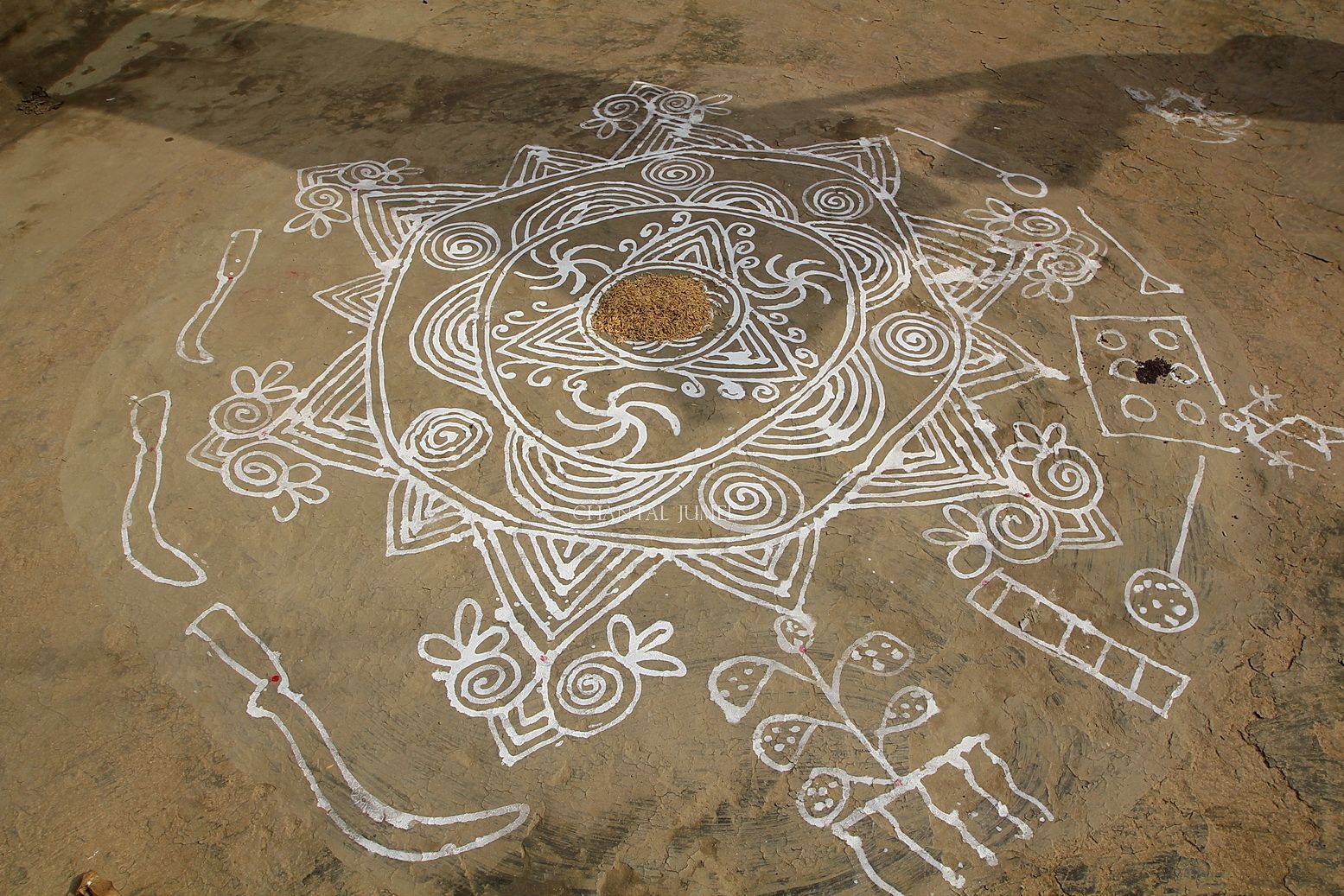
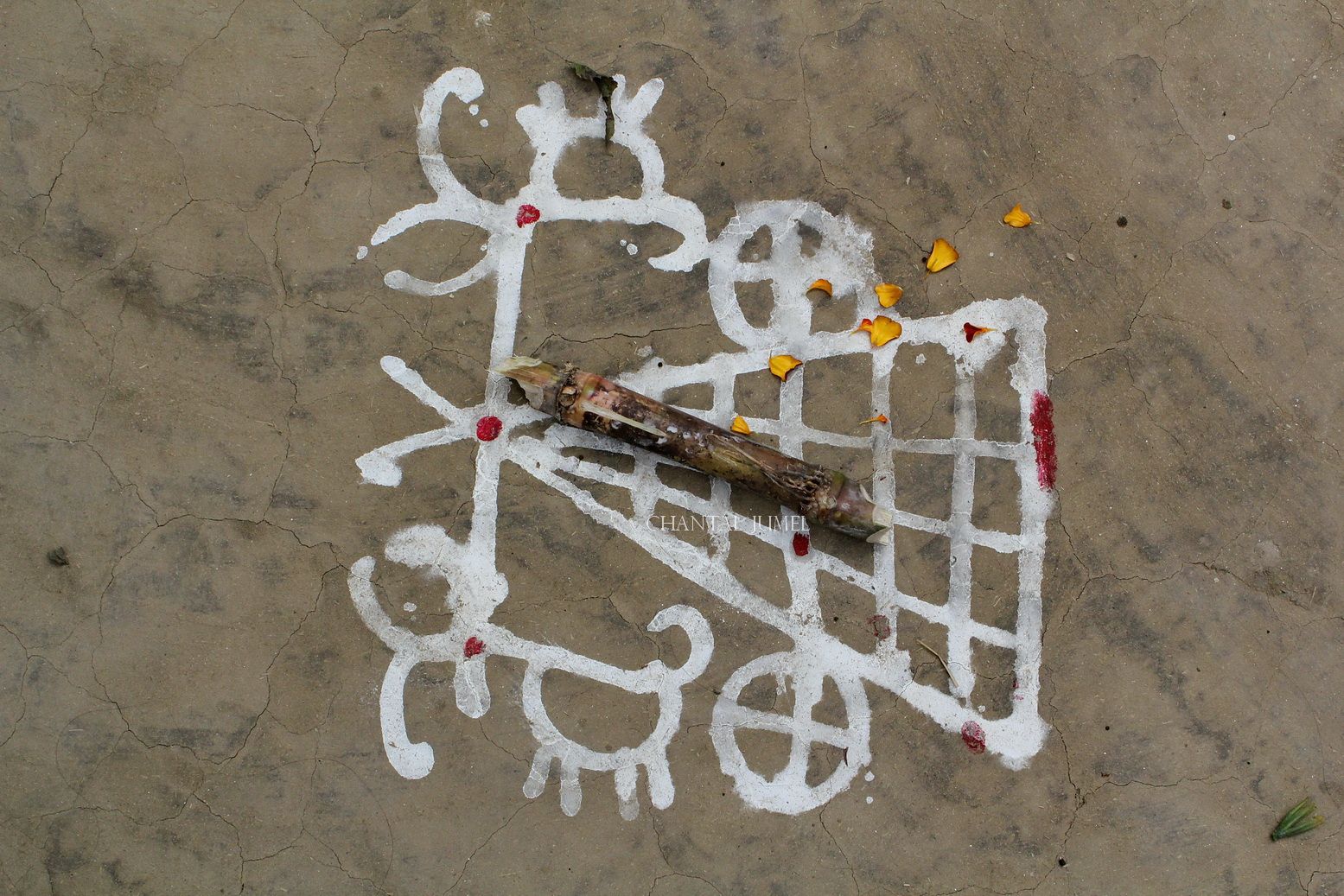
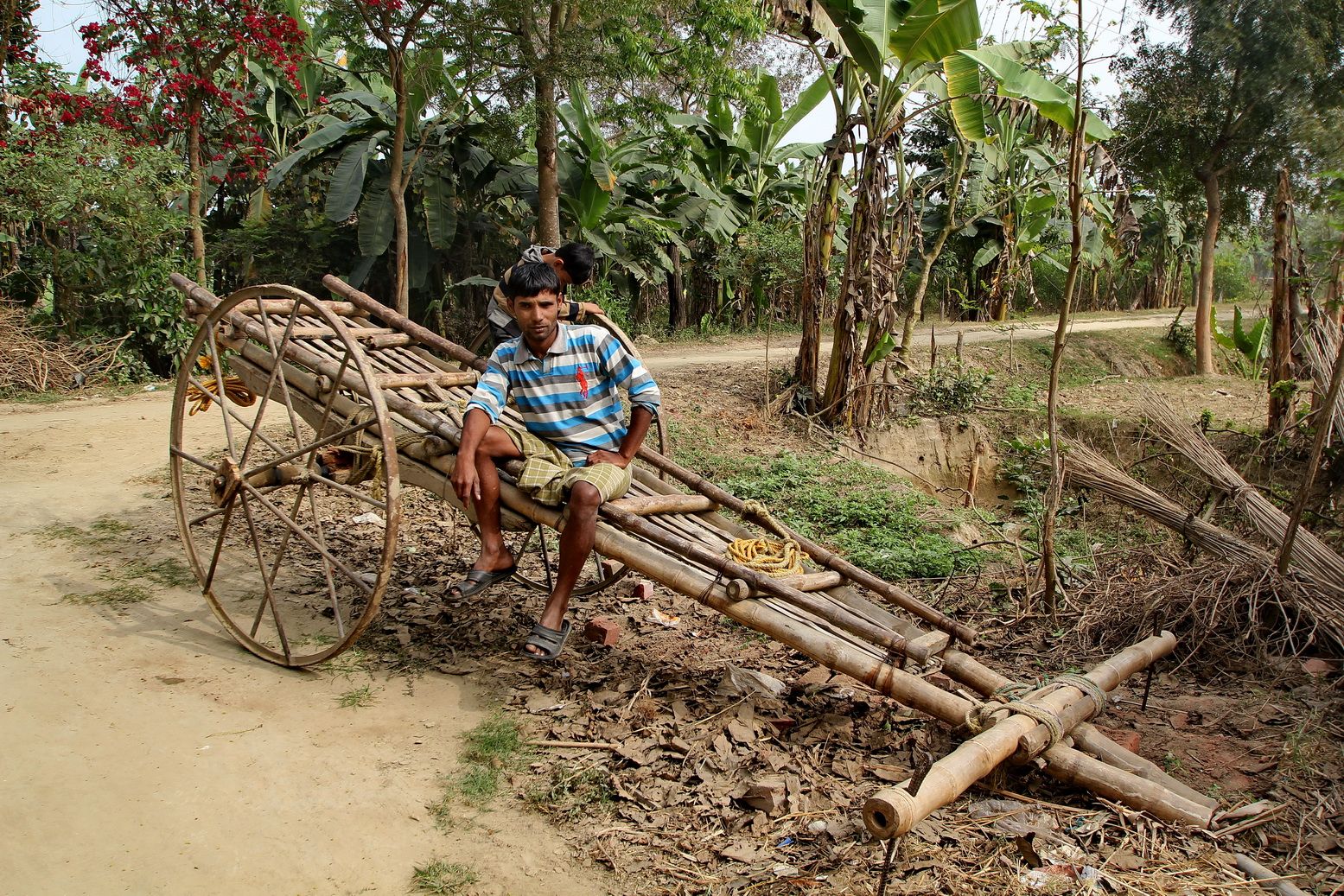
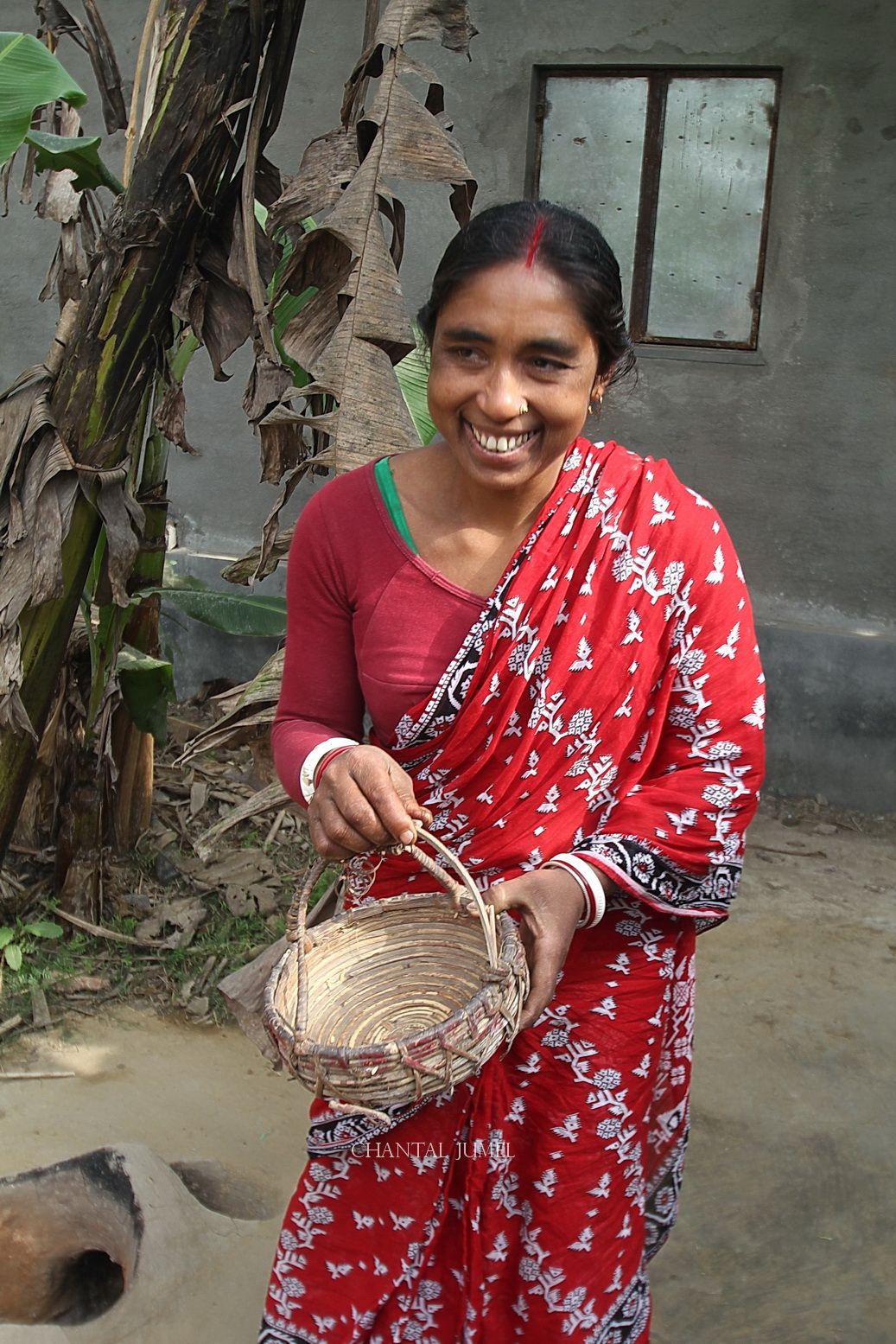
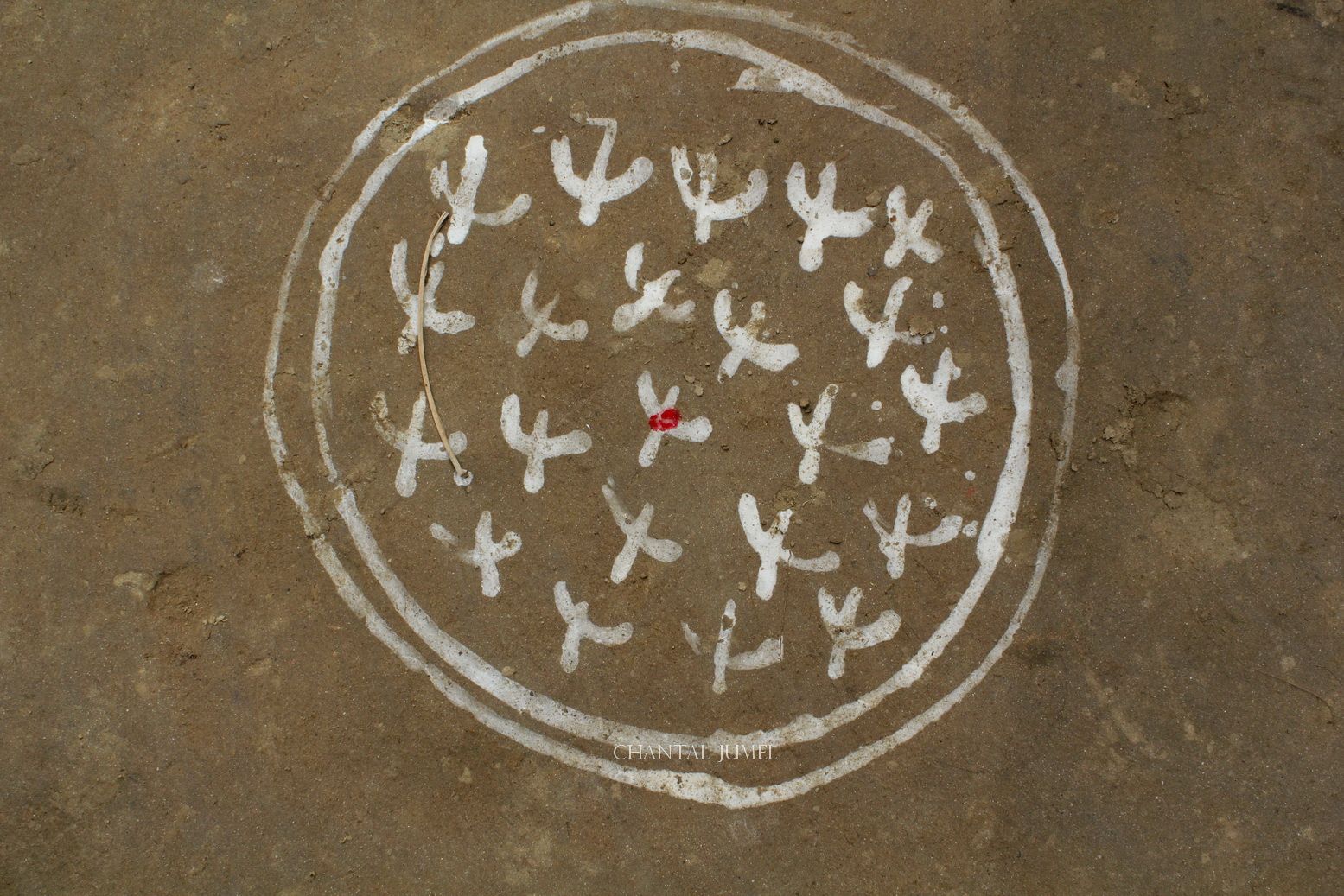
Growing marigolds for the gods
Orange or yellow marigolds and unhusked rice are part of the offerings to the gods. In this part of Bengal, farmers fish in ponds and grow marigolds. Their wives thread the flaming pompons with needles to make garlands to be sold in the temples. In some alpona, the Indian carnation sometimes overtakes the lotus and takes the place of the central motif, delineating the crenelated contours of marigold petals.


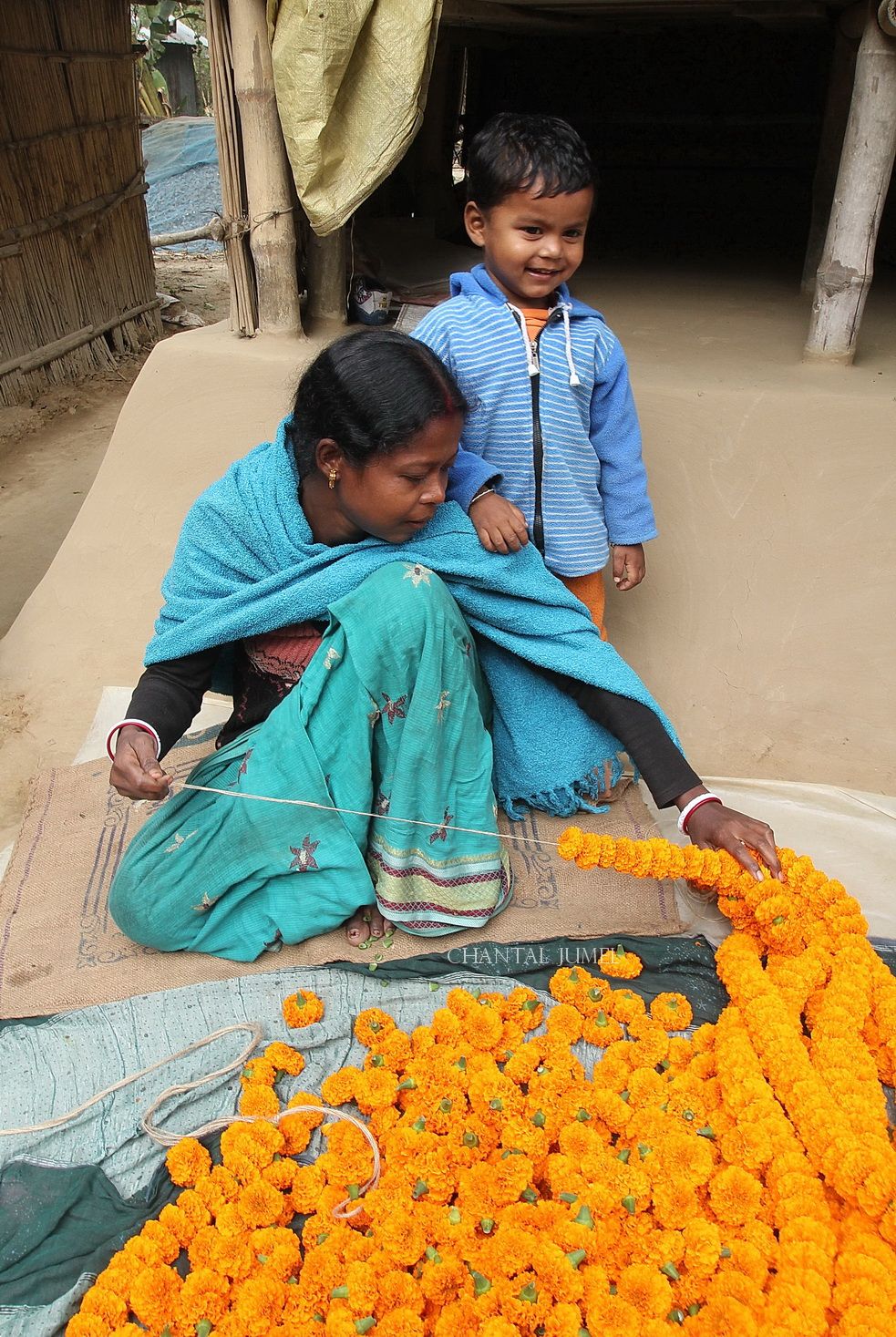
Worshipping Ganga and Yamuna goddesses
In another village, colourful globes with tentacles next to strange mud creations draw my attention. They look like sea anemones dangling from rods stuck in the soil. I learn that they are carved from a plant pith called shola or "Indian cork".
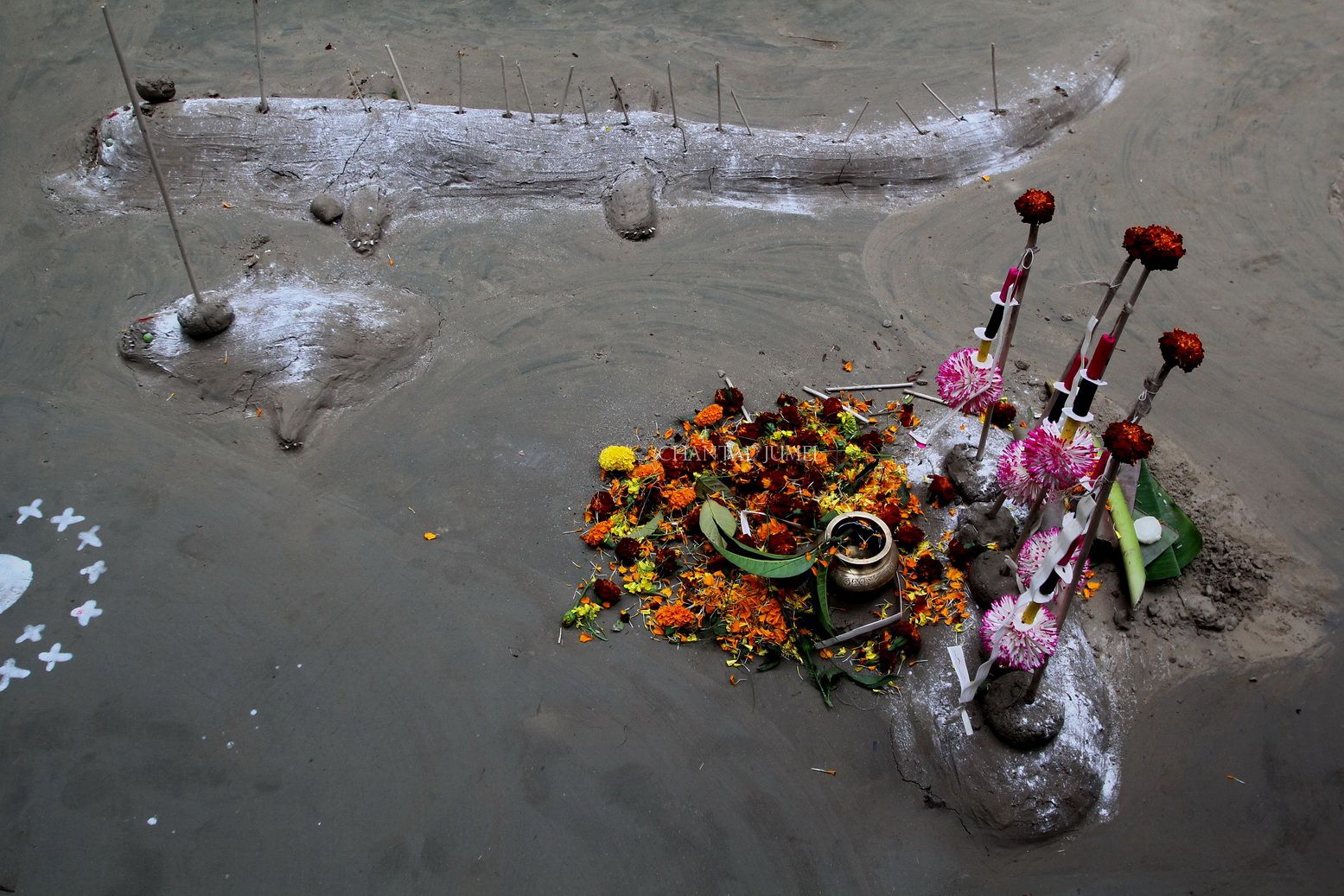
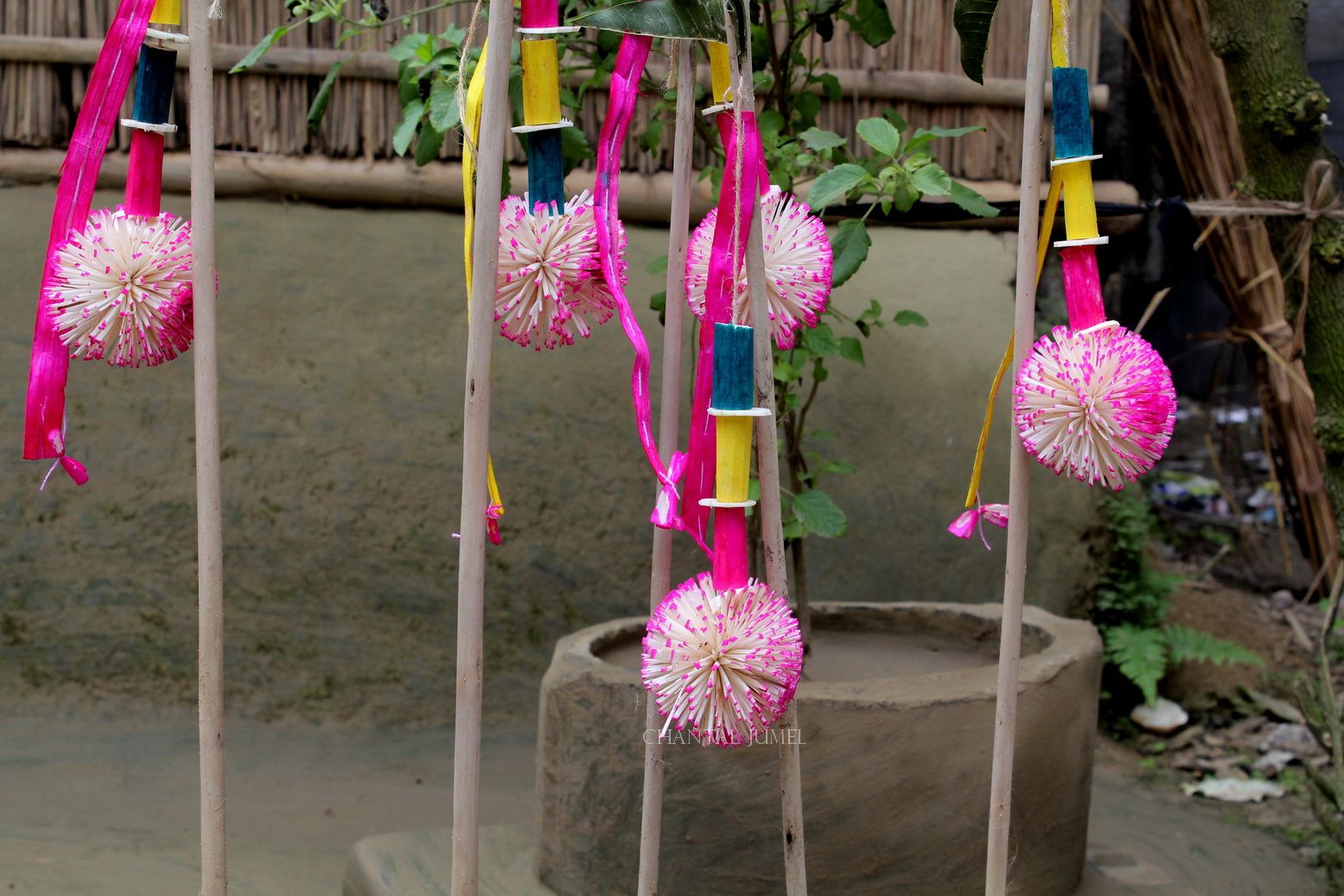
Near the banners, a crocodile (kumir) and a a turtle (kachin) shaped in clay seem to emerge from the ground; they are not painted like Sumitra’s alpona. The two reptiles adorned with marigold heads and wooden slats to represent teeth and claws await the offering rituals dedicated to the goddesses of the two rivers whose mounts they are.
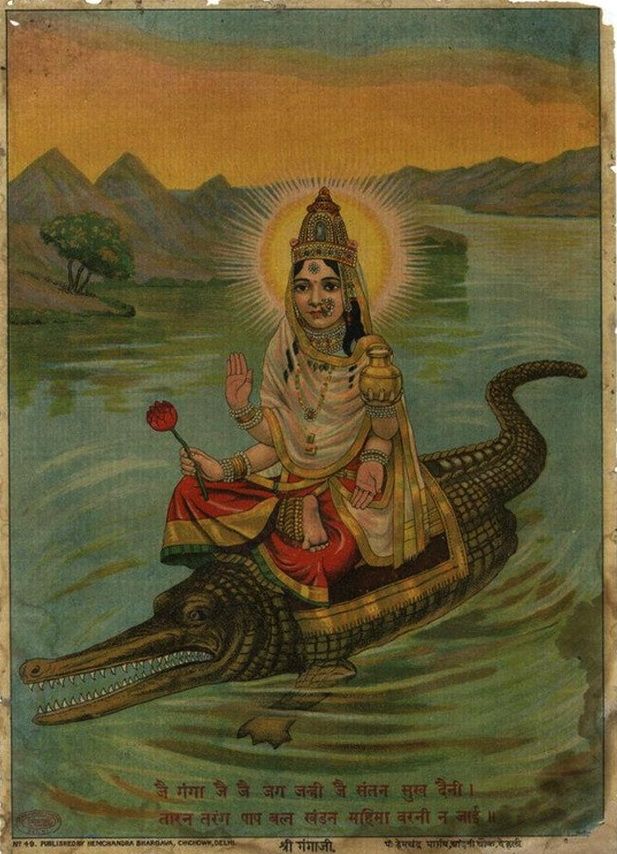
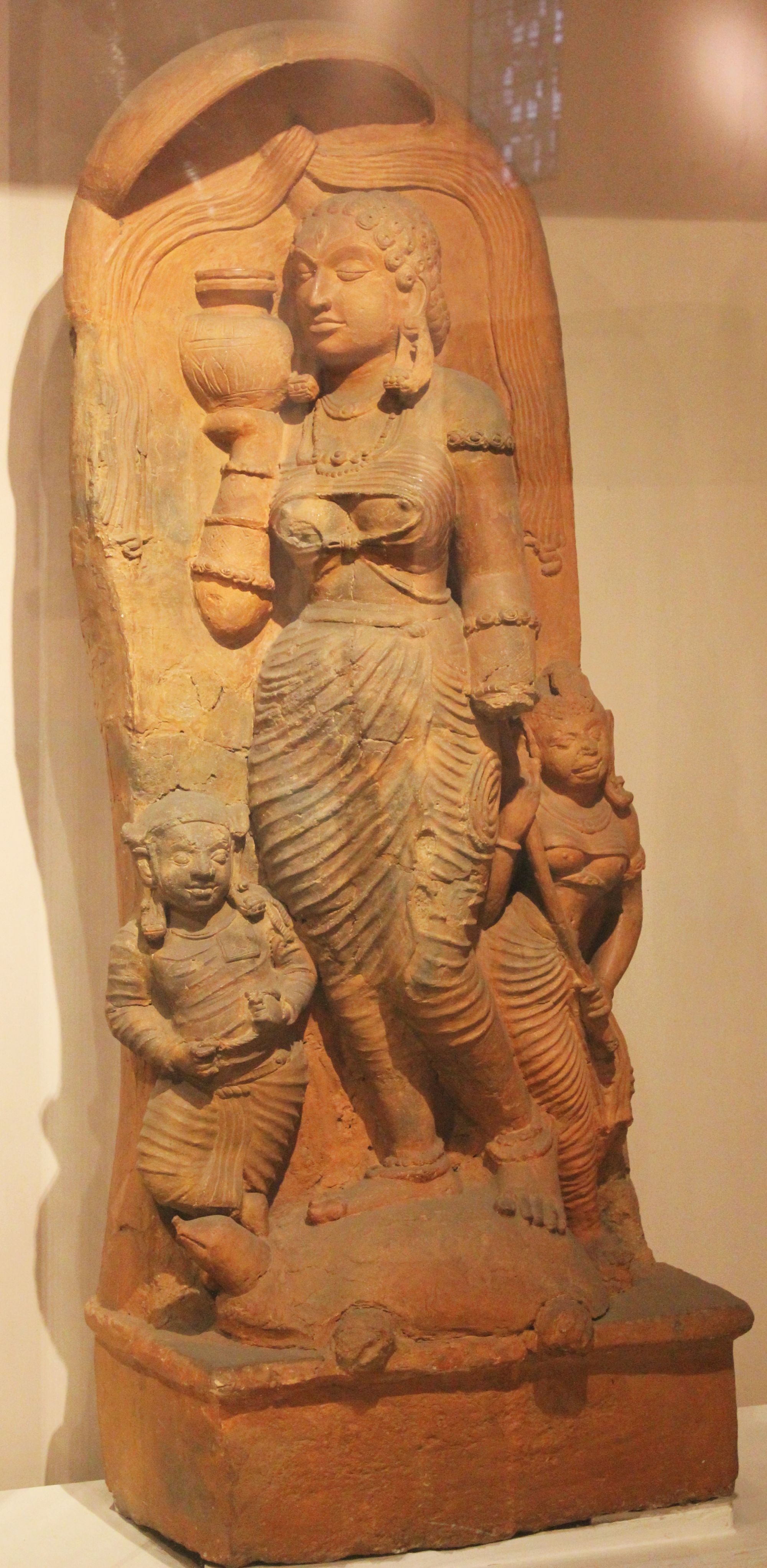
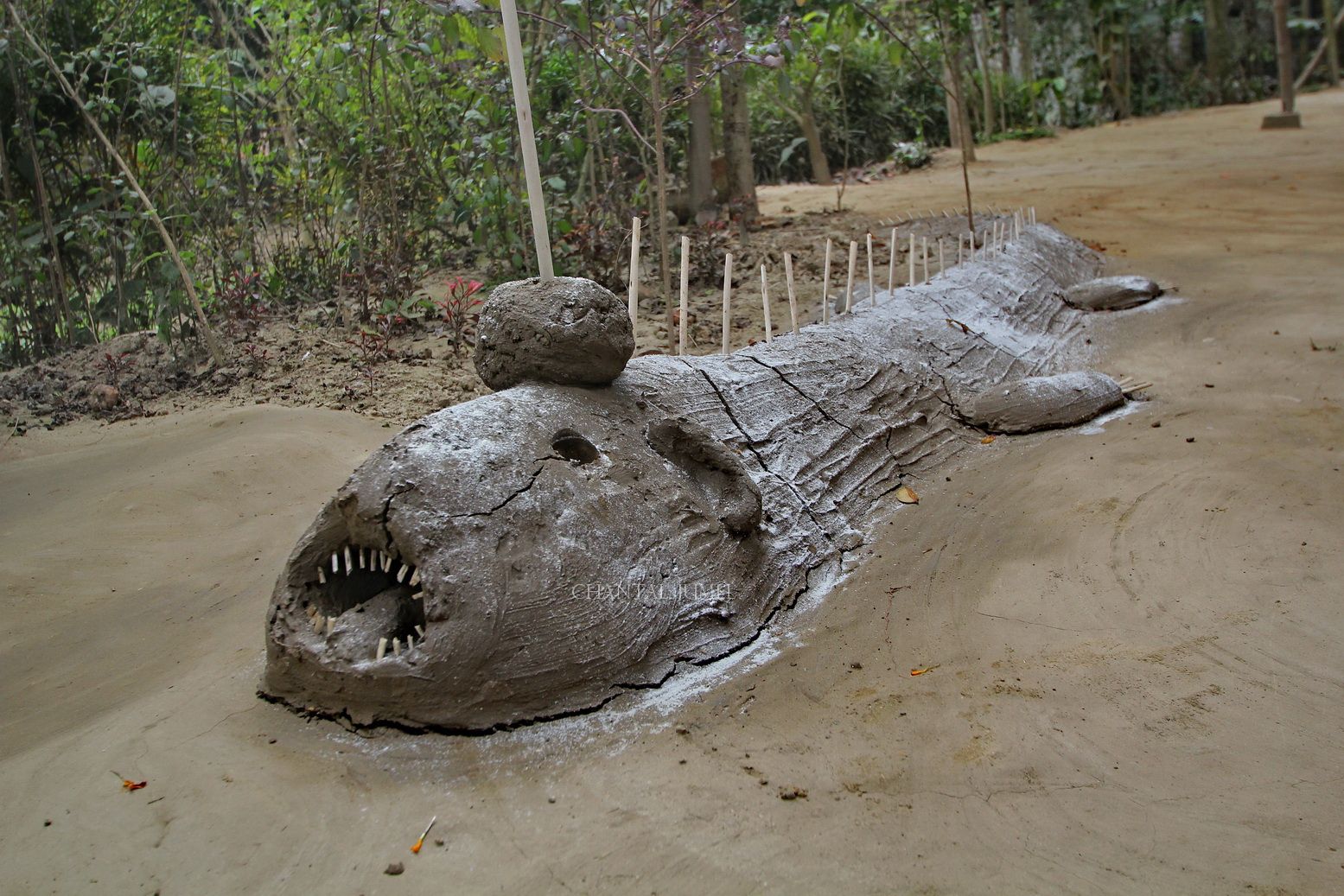
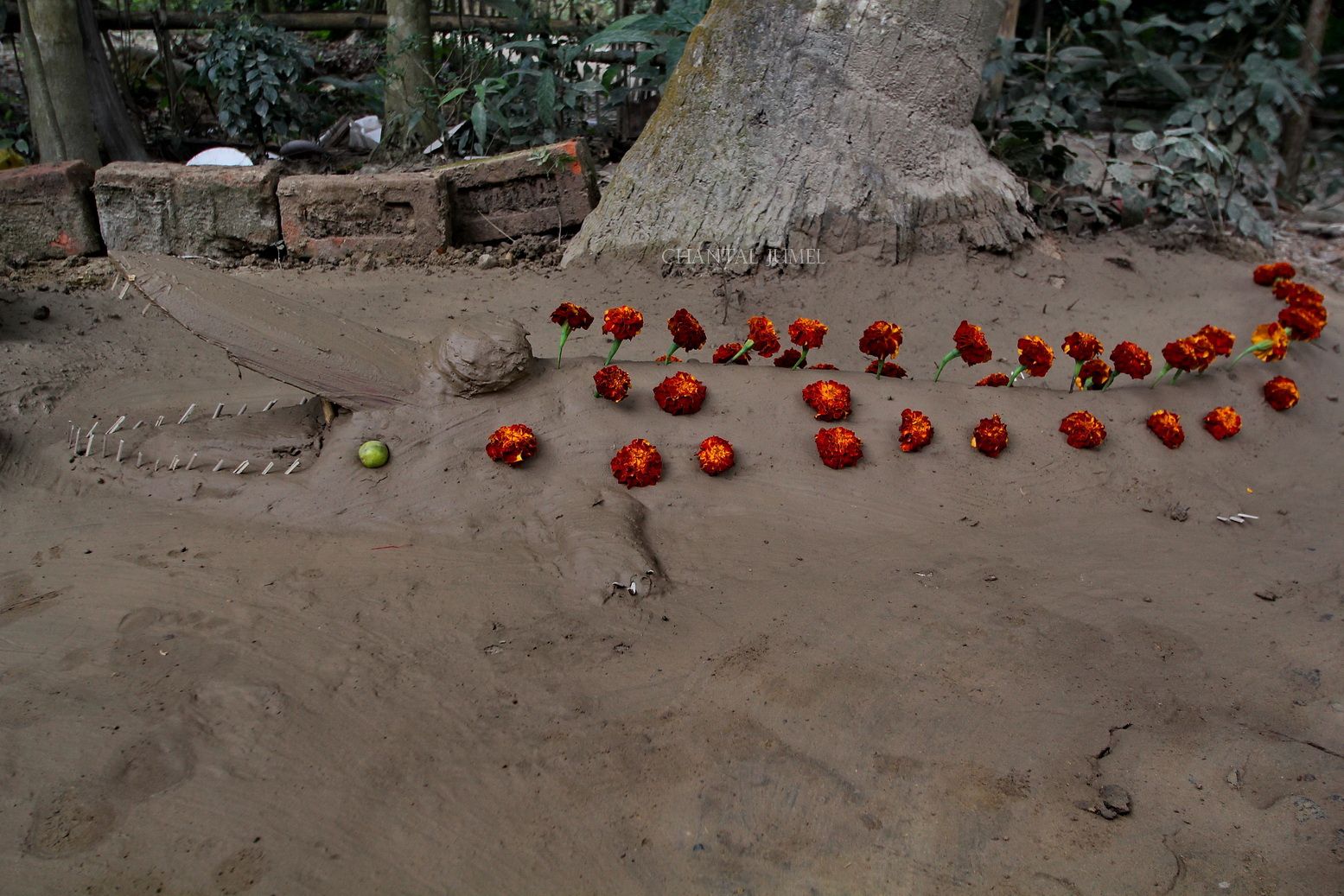


Shantiniketan, the abode of peace
It’s time to head for Shantiniketan, the "Abode of Peace", an open-air school north of Kolkata established in the early 20th century by the poet Rabindranath Tagore. He believed in the convergence of traditional Indian values and progressive Western ideas. At that time,"Kala Bhavan", the visual art department, opened its doors and included the art of alpona into art education and campus events. Even today, students continue to draw alpona on national holidays such as Republic Day, Independence Day, Holi or the Spring Equinox, the death anniversary of the poet Tagore, and on the occasion of other school events. For me, the quest has just begun.
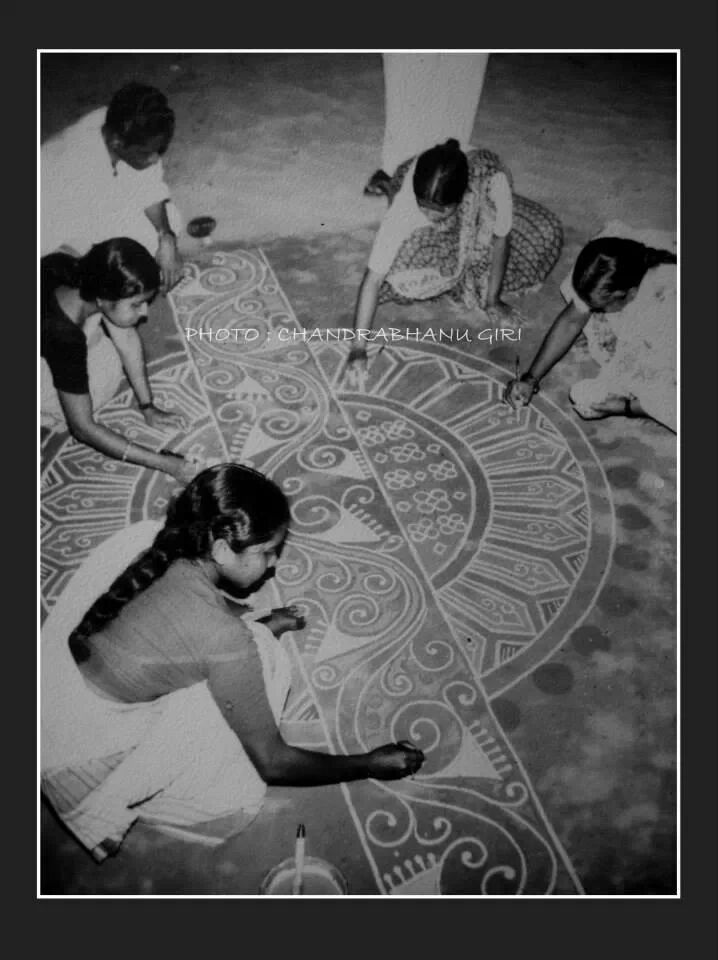

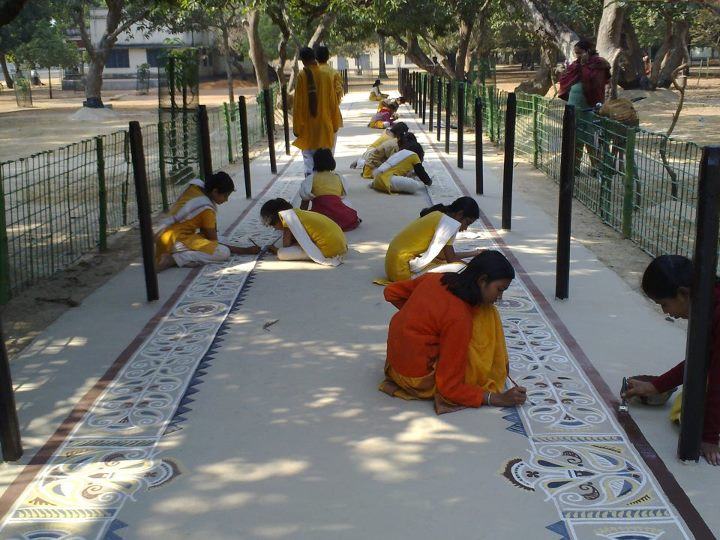
Previous articles:
Alpona: Images and Symbols of Bengali Women
Bengal alpona, "The River by Jean Renoir"— part 1
Bengal alpona, "Meeting with Kolkata" — part 2
Bengal alpona, "At Sumitra’s home"— part 3
